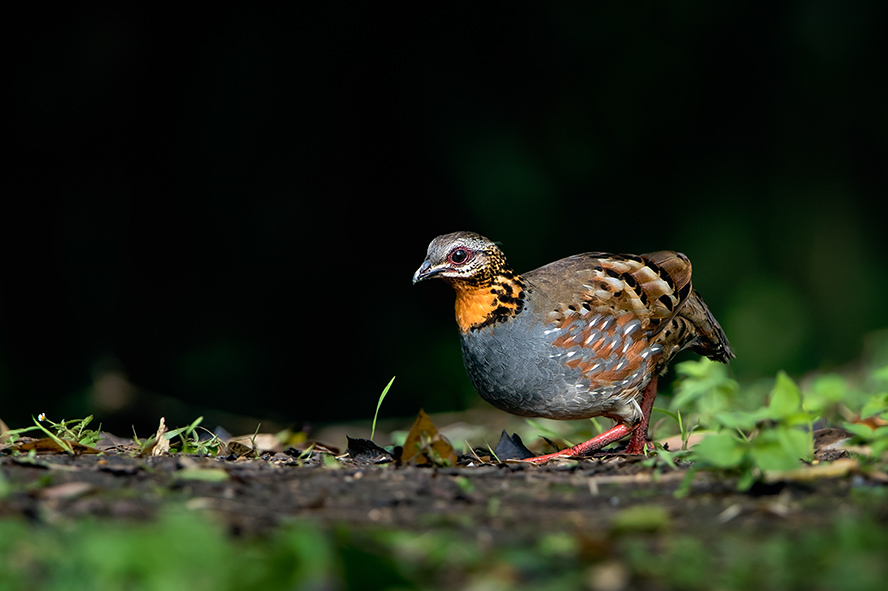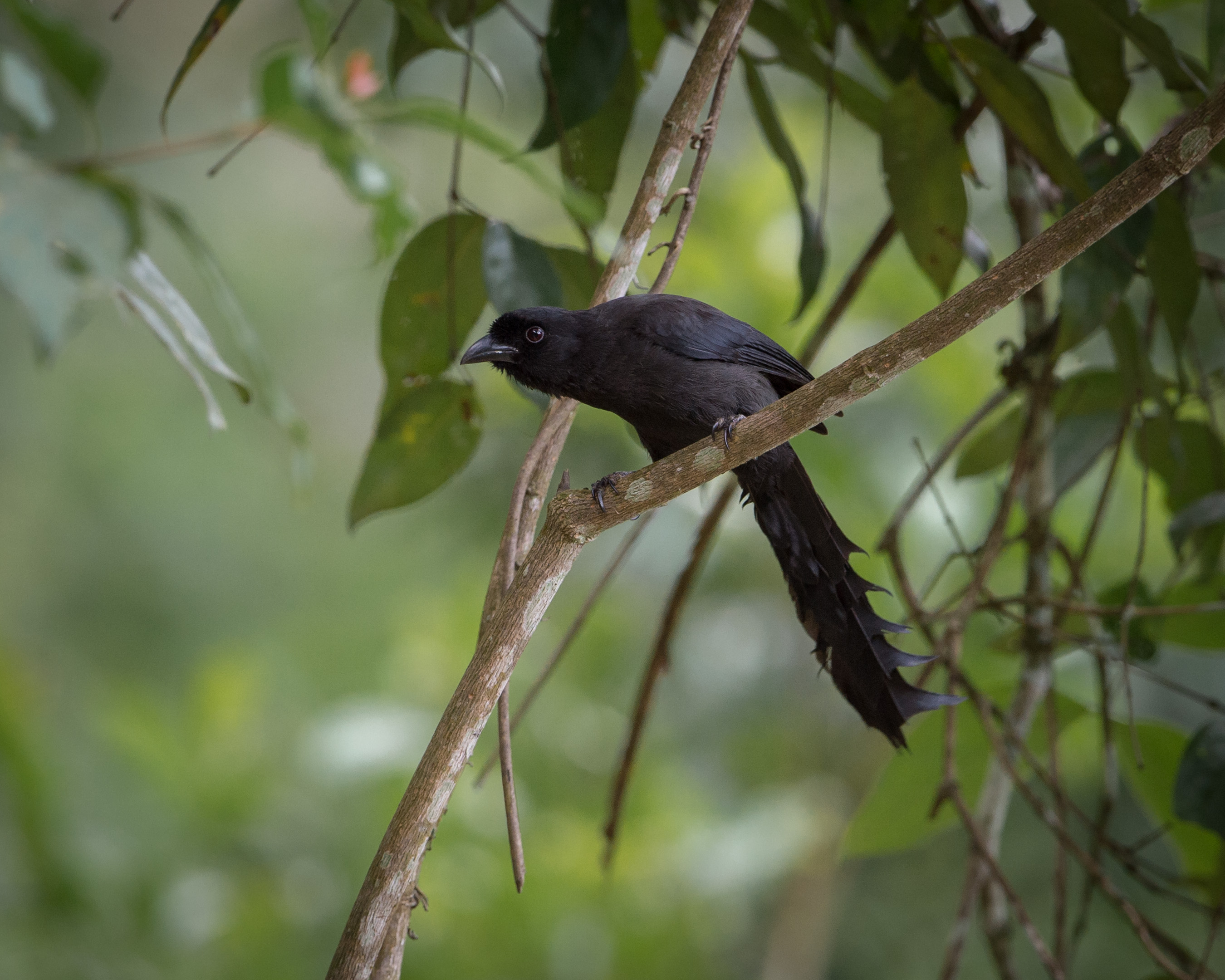Hainan Island Monsoon Rainforests
The ecoregion’s land area is provided in units of 1,000 hectares. The conservation target is the Global Safety Net (GSN1) area for the given ecoregion. The protection level indicates the percentage of the GSN goal that is currently protected on a scale of 0-10. N/A means data is not available at this time.
Bioregion: South China Subtropical Evergreen & Monsoon Forests (IM13)
Realm: Indomalaya
Ecoregion Size (1000 ha):
1,557
Ecoregion ID:
232
Conservation Target:
52%
Protection Level:
2
States: China
The endemic and rather cryptic Hainan partridge is one of four reasons why, in 1998, BirdLife International declared Hainan Island as an Endemic Bird Area, a high priority area to conserve birds with restricted range distributions. The other three reasons were the white-eared night heron, Hainan leaf warbler, and yellow-billed nuthatch. But in addition to these four endemic species, Hainan Island also supports another 46 birds that are endemic subspecies, some of which may require elevation to species status.
Hainan Island is separated from the mainland China’s Leizhou Peninsula by the narrow Qiongzhou Strait. Strong similarities of Hainan’s flora with the flora of Vietnam, rather than with the adjacent mainland, suggest that the island was once part of what is now Vietnam, and broke away during the late Mesozoic period volcanic activity, over 65 million years ago, to drift to its current location near China.

The flagship species of the Hainan Island Monsoon Rainforests ecoregion is the Hainan partridge. Image credit: Creative Commons
Hainan Island is represented by two ecoregions. The Hainan Island Monsoon Rain Forests ecoregion represents the montane forests in the central region of the island, which has a more seasonal climate. The central mountains peak with the 1,840 m high Wuzhi Mountain, which literally means ‘Five Finger Mountain’.
The rain shadows cast by the mountains create seasonality, with the moist summer monsoons bringing rain, alternating with the cool, dry winters. Annual precipitation on the east coast is about 2,000 mm but is only about 1,000 mm on the west coast. Typhoons from the South China Sea are quite frequent. A part of the ecoregion is also represented on the mainland, in the Leizhou Peninsula.
Many of the island’s 4,200 species of plants, almost 100 mammal species, and 300 bird species are found in the monsoon forests. The dominant forest trees, Kleinhovia hospita, Spondias pinnata, and Tilia hainanensis, are deciduous, encouraging an understory of grass beneath the thin canopy. The drier interior regions support a savanna ecosystem with scattered Albizzia procera.

Ractchet-tailed treepie. Image credit: Creative Commons
Evergreen trees grow on the shaded slopes at higher elevations, above 1,000 m, that retain more moisture. These trees include Diospyros potingensis and Meyna hainanensis and species of Castanopsis, Lithocarpus, and Schima. Cloud forests grow at elevations above 1,600 m, with several conifers, including Dacrydium pierrei, Podocarpus imbricatus, Podocarpus annamiensis, Cephalotaxus hainanensis, Cephalotaxus mannii, Keteleeria evelyniana, Pinus fenzeliana, Pinus latteri, and Pinus massoniana. Eight plant genera are endemic to Hainan Island, namely Pyrenocarpa, Chunia, Setiacis, Parapyrenaria, Wenchengia, Metapetrocosmea, Pentastelma and Cathayanth.
The endemic mammals include the Hainan black crested gibbon, Hainan hare, Hainan moonrat, and Hainan flying squirrel. Other mammals of conservation importance include the Asiatic black bear, sambar deer, yellow-bellied weasel, Eurasian otter, crab-eating mongoose, and leopard cat.
Birds that are indicators of old growth forests include the black-browed barbet, mountain bulbul, puff-throated bulbul, thick-billed green pigeon, grey-cheeked fulvetta, grey-chinned minivet, rufous-capped babbler, crested goshawk, and Hainan blue flycatcher.
The forests have been extensively converted for rubber, oil palm, and coffee plantations. Slash-and-burn cultivation by the Miao and Li people in the upper montane areas has degraded large extents of forests. This habitat loss and degradation, in synergy with hunting pressure, have placed many of the forest dependent wildlife and plants under threat of extirpation.
Thus, the recommended priority conservation actions are to: 1) conserve limestone and montane forests that support high bird diversity, including endemic subspecies;[vi] 2) ensure better protection of the existing protected areas; and, 3) expand the Yinggeling-Limushan and Wuzhishan-Diaoluoshan nature reserves, and establish the Baolonglinchang-Linbiling-Fuwanling protection system for endangered species and to protect water sources in the upper catchments.
Citations
1. Lok, C.B.P., Shing, L.K., Jian-Feng, Z. and Wen-Ba, S., 2005. Notable bird records from Bawangling national nature reserve, Hainan island, China. Forktail, 21, p.33.
2. Zhu H (2016) Biogeographical Evidences Help Revealing the Origin of Hainan Island. PLoS ONE 11(4): e0151941. https://doi.org/10.1371/journal.pone.0151941
3. Lu, Z., Zhi-Yun, O., Yi, X., Wei-Hua, X., Hua, Z. and Bo, J., 2011. Priority areas for biodiversity conservation in Hainan Island: Evaluation and systematic conservation planning. Yingyong Shengtai Xuebao, 22(8). https://www.ncbi.nlm.nih.gov/pubmed/22097374.



